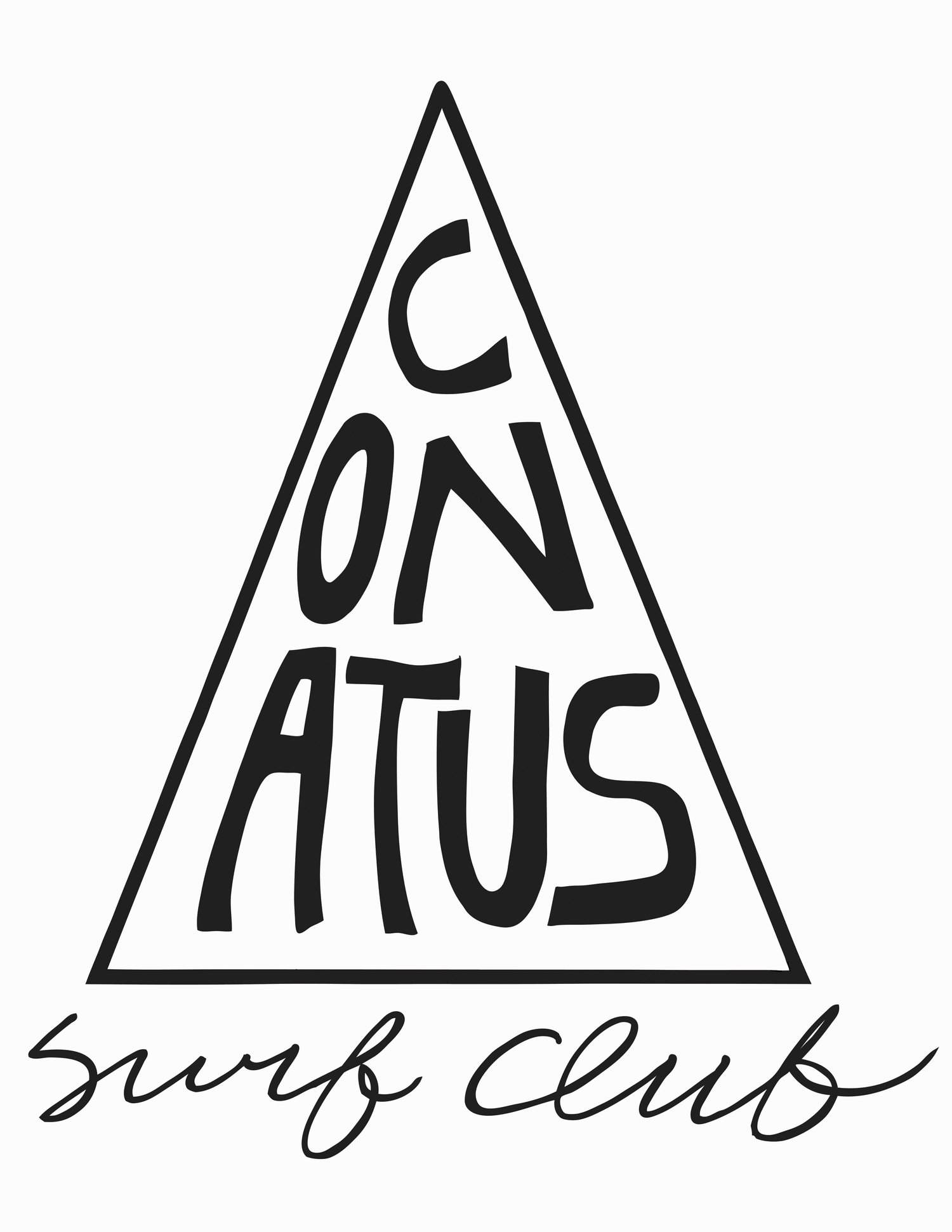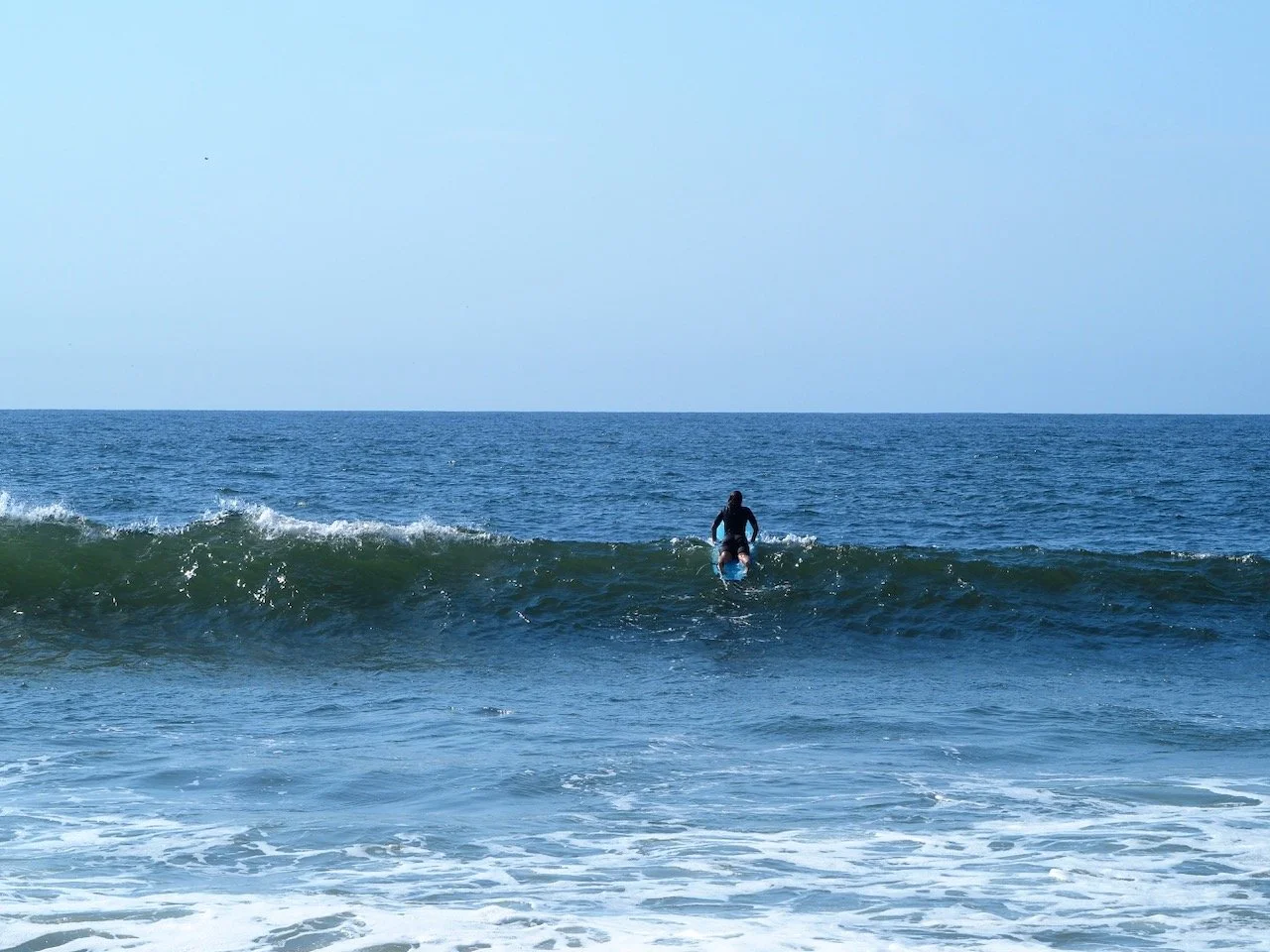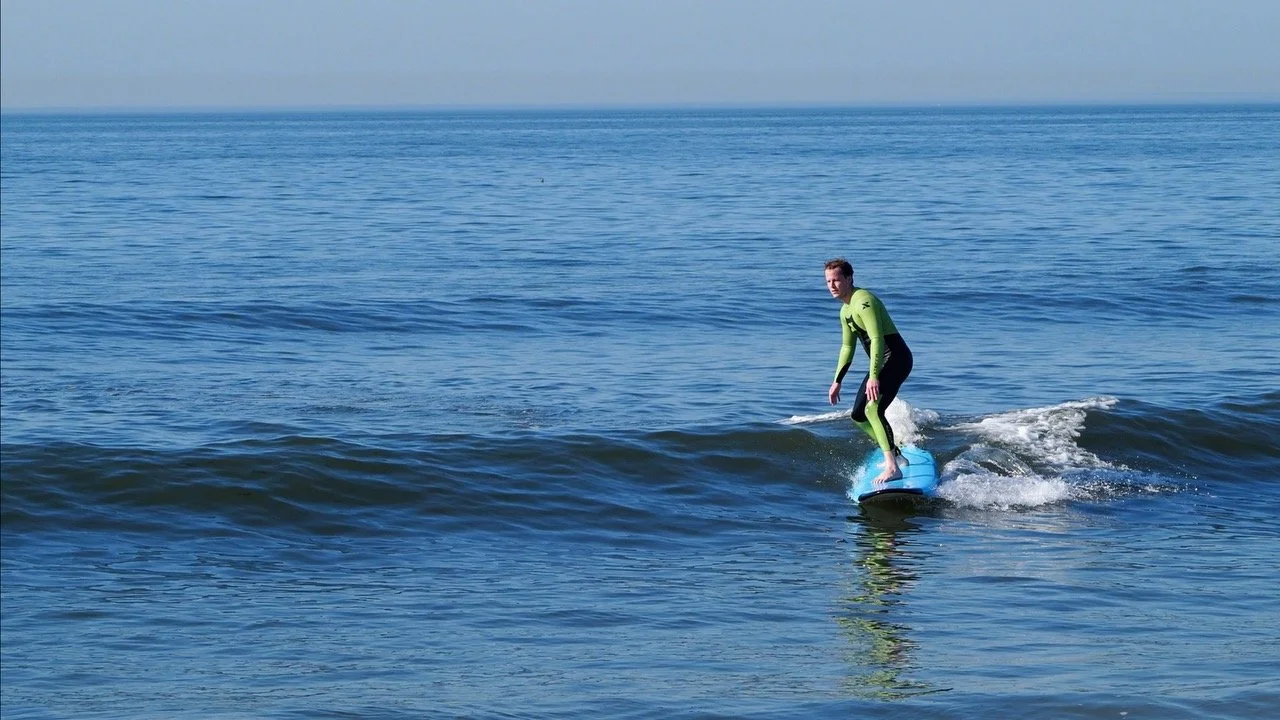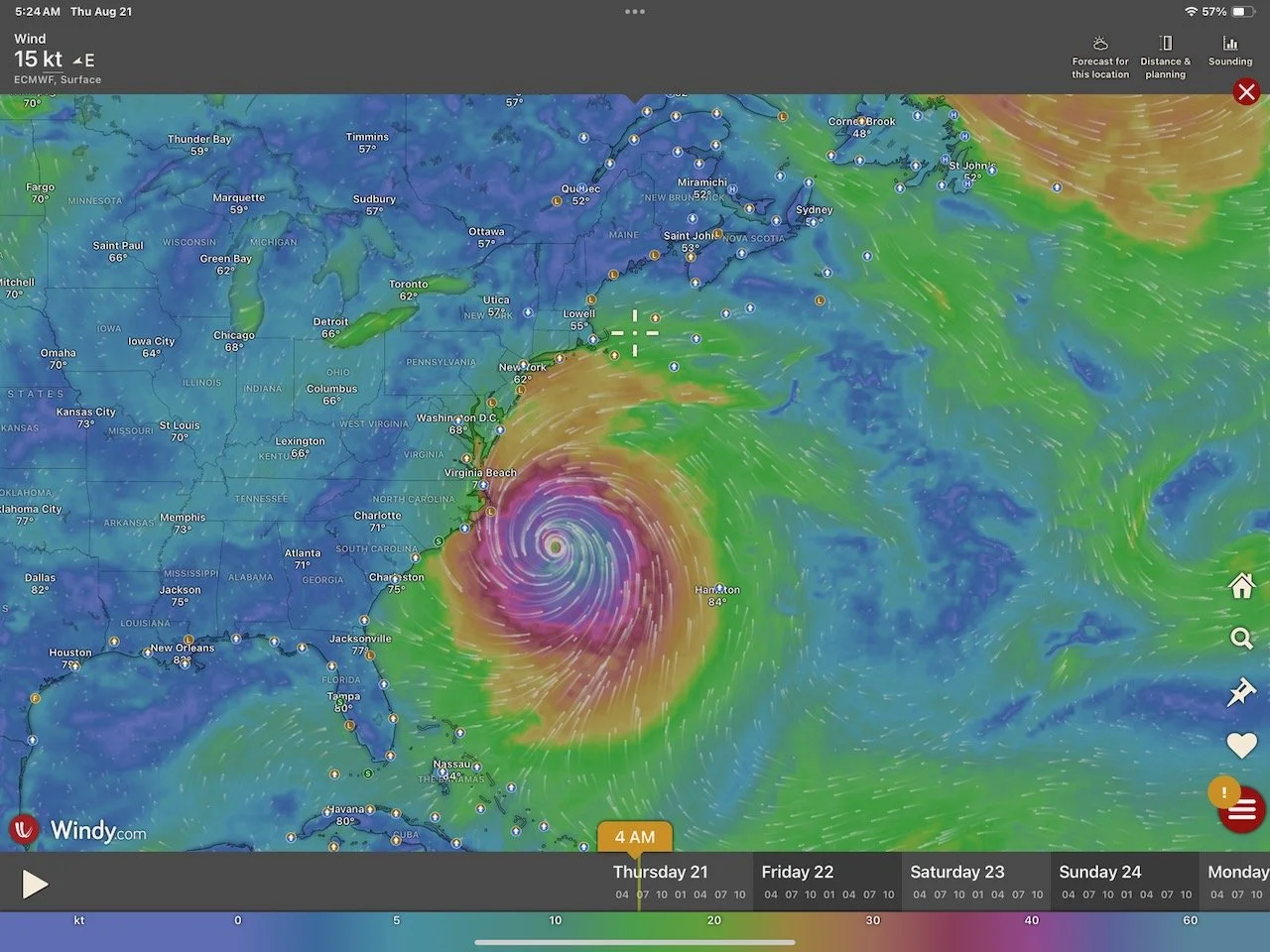Most surf websites will tell you to wait for "green" conditions and 3-5 foot waves to book your lesson, but this is completely wrong. After coaching hundreds of beginners over the past decade, I've discovered that the days Surfline rates as "good" are often the worst possible conditions for learning to surf. Here's the uncomfortable truth: if you're scheduling your surf sessions based on Surfline's color-coded ratings, you're missing 80% of the best learning opportunities.
The Surfline Scheduling Problem (And Why It's Backwards for Beginners)
Let me paint you a picture. It's Tuesday morning, and the buoys are reading 2 feet at 10 seconds from the southeast with light local winds. Perfect beginner conditions—clean, manageable waves with enough push to practice fundamentals. But when you check Surfline, it reads "0-1ft and Poor-Flat." So you don't go.
Meanwhile, Saturday shows up as "3-4ft and Good" on Surfline. You book your lesson, drive to the beach, and find yourself in a washing machine of whitewater with twenty other beginners getting pounded by overhead sets while fighting crowds of frustrated intermediates.
This scenario plays out every single week, and it reveals a fundamental misunderstanding about what makes good surf for learning.
The core issue: Surfline optimizes for experienced surfers, not beginners. Their "green" ratings prioritize wave quality for performance surfing—clean faces, size, and power. But these same qualities that make waves exciting for experienced surfers often make them terrible for learning basic skills.
What "Good" Conditions Actually Look Like for Beginners
Nathan on a 0-1 POOR/FLAT Surfline day. Turns out it was really 1-2ft and Good-Epic for beginners.
After analyzing thousands of coaching sessions, I've established a clear bar for proficiency: a surfer should be able to take off consistently, go down the line, and perform at least a roundhouse cutback and a floater in the space of one session... in 1-2 foot waves on a long or mid-length board.
Notice what's missing from that standard? Size. Power. Perfect offshore winds.
The best beginner conditions are actually what I call "borderline territory"—those days when Surfline says "0-1ft and Poor" but the buoys show 2 feet at 8 seconds from the southeast. These are the sessions where magic happens, because you get:
Manageable wave size that won't overpower your paddling ability
Consistent sets with enough period to generate rideable faces
Fewer crowds because most surfers are staying home
Room to make mistakes without getting ragdolled
The Three Tools That Actually Matter (Hint: Surfline Isn't One of Them)
If you want to stop missing great surf sessions, you need to abandon Surfline's forecasts and start using the tools that actually predict beginner-friendly conditions:
1. Buoy Data (Your New Best Friend)
The threshold for surfable conditions isn't what Surfline tells you—it's 1 foot at 6 seconds. That's the lowest threshold for the existence of something to surf in NY/NJ. Yes, chances are high that it might be flat, but they're not certain.
Important note: These readings are specific to the NY/NJ area. The base level of what will and won't break varies dramatically around the world. A 1-foot reading in Hawaii might be completely flat, while the same reading in a more sheltered spot could be overhead. You need to calibrate these thresholds to your local breaks through experience.
Learn to read the key buoys for your area. In New York, I track buoy 44091. When it shows 2-3 feet at 7-10 seconds from the south or southeast, that's often better for beginners than when it shows 4-6 feet at 12 seconds (which Surfline would rate higher).
2. Local Wind Forecasts (Use Weather Underground, Not Surfline)
Surfline's wind forecasts are notoriously unreliable. Use Weather Underground for accurate local wind predictions. Here's what to look for:
Light offshore or side-offshore winds (under 10 knots)
Morning glass conditions before thermal winds kick in
Post-storm cleanup periods when winds die but swell remains
The sweet spot is often those Tuesday through Thursday mornings when thermal patterns are weakest and you can find clean conditions even with smaller swells.
3. Live Observations (The Ultimate Reality Check)
This is where most beginners fail: they never develop the habit of checking conditions with their own eyes. Some of my best coaching sessions have happened on days when I drove to the beach despite poor forecasts, only to discover clean 2-foot waves with no one out.
Borderline days require live checking because:
Bathymetry affects how swells break at specific spots
Local wind shadows can create clean conditions at certain breaks
Tide timing can make marginal swells suddenly rideable
What If You Don't Have Access to Buoy Data?
Not every surf spot has nearby buoys, and some regions lack reliable offshore monitoring. When buoy data isn't available, you'll need to become fluent in reading larger weather patterns.
Use wind maps to track swell-generating systems. This is where Surfline's color coding actually makes sense—but not for wave quality. Those colors represent wind intensity: higher winds show up as yellow, red, and purple. Lighter winds appear blue and green.
This is Hurricane Erin from August 2025. Higher winds in center. Lighter winds on the outskirts. Beginners aren’t necessarily looking for these systems, but they can make some excellent baby waves go off that require a larger swell.
What you're looking for:
Size of the weather system: Larger storm systems generate more swell
Duration the system blows toward your coast: Longer fetch time means more organized swell
Wind direction relative to your coastline: Systems that blow directly toward your break versus those that blow parallel to it
Get comfortable jumping between wind maps and correlating what you see with what you find at the beach. This pattern recognition takes time, but it's how you develop real forecasting literacy when you're surfing remote breaks or traveling to new spots.
But what about the person who just wants to be told when to surf? I'm going to assume that's not you. You want to get better faster and enjoy fun-for-you waves with just a handful of people out.
The Psychology Behind Waiting for "Perfect" Conditions
I've noticed an interesting pattern in my coaching practice: students who only want to schedule sessions when Surfline shows green conditions often think the value of coaching lies in riding "quality" waves. They'll say things like, "I only want to spend money on coaching when the surf is good."
This reveals a fundamental misunderstanding of how skill development works. The goal isn't to surf perfect waves—it's to become proficient enough to surf imperfect waves consistently.
When you only surf on Surfline's "good" days, you're training in the surfing equivalent of always practicing piano with perfect acoustics and a concert grand. But real surfing happens in the equivalent of a garage with an out-of-tune upright piano. The surfer who can make magic in 1-2 foot wind swell will absolutely rip when the waves actually get good.
What to Do Instead: A Better Forecasting Strategy
Here's the system I teach all my students:
Step 1: Check buoys first, Surfline last. If you see anything above 1 foot at 6 seconds, it's worth investigating further.
Step 2: Cross-reference with local wind forecasts. Look for windows of light winds, especially early morning or late afternoon.
Step 3: Factor in crowd psychology. The best learning conditions often happen when the crowd thinks it's "too small" to surf. This is where Surfline is important. It’s the “social forecast.” Green = crowded.
Step 4: Develop your eye. Start checking conditions in person, even when forecasts look poor. You'll be amazed how often you find rideable waves that don't show up on any forecast.
Step 5: Embrace "boring" surf. Those clean, ankle-to-knee-high sessions are where you'll make the fastest progress on fundamentals.
The Advanced Move: Reading Between the Lines
Once you start paying attention to buoy data and local winds instead of Surfline ratings, you'll notice something interesting: there are way more surfable days than you thought. The limitation was never the ocean—it was your forecasting literacy.
I've seen this transformation happen dozens of times. Students go from surfing once a week (when Surfline cooperates) to surfing three or four times a week (when they learn to read actual conditions). Their progression accelerates dramatically because they're getting more water time in more varied conditions.
This is especially crucial for beginners because skill development in surfing is non-linear. You don't improve by riding ten perfect waves—you improve by reading hundreds of different wave faces, adjusting to varying conditions, and developing an intuitive feel for how waves break.
The Bigger Picture: Building Independence
My goal as a coach isn't to create students who depend on perfect forecasts or need me to tell them when to surf. It's to develop surfers who can look at buoy data, assess local conditions, and make their own decisions about when and where to paddle out.
This kind of forecasting literacy is what separates surfers who progress quickly from those who plateau early. When you understand how to find rideable waves in marginal conditions, you're not just becoming a better surfer—you're becoming a more independent one.
The ocean doesn't care about Surfline's color-coded ratings. Waves break according to physics: swell period, direction, bathymetry, and local winds. Learn to read these variables directly, and you'll discover that the ocean offers way more opportunities than any app can predict.
Get Unstuck: Stop waiting for Surfline to turn green. Start checking buoys, tracking winds, and developing your eye for real conditions. The best surf sessions—especially for beginners—happen on the days when everyone else stays home.
Want to learn the complete system for reading surf forecasts like a pro? My Surf Forecasting Course covers everything from interpreting buoy data to understanding local wind patterns. Stop missing great surf sessions because of bad forecasting habits.




